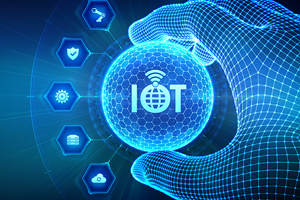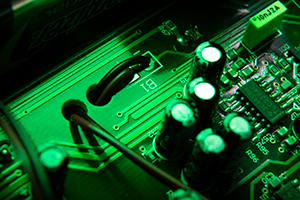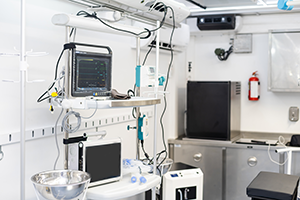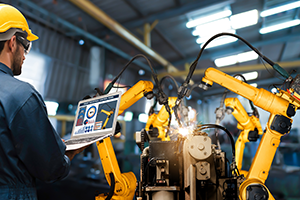Embedded Computers
嵌入式计算机在现代科技应用中扮演着关键角色。它们专注于执行特定功能,并具有小型、低功耗、实时处理等特点,广泛应用于工业、汽车、医疗和服务等领域。嵌入式计算机与一般笔记本电脑不同,其重点在于效率和可靠性。近年来,随着人工智能、边缘计算等技术的发展,嵌入式计算机的应用领域不断扩大,包括物联网设备、汽车电子、医疗设备和工业自动化等。嵌入式计算机的趋势包括人工智能整合、边缘计算和物联网发展等,这些趋势将为未来的科技应用带来更大的创新和发展。
Embedded Computers – Features, Uses, & Trends
You probably have an embedded computer in your pocket. You might wear an embedded computer on your wrist. It is without question that you encounter a number of embedded computers on your way to work, whether you drive, take a bus, train, tram, or even fly. Embedded computers might not make the world go around, but they are vital in making sure you can go around the world. This begs the question, what exactly is an embedded computer?
The short answer is that an embedded computer is a specialized system designed to perform specific functions within a larger device, machinery, or system. Much like their industrial PC counterparts, embedded computers are pivotal in the ongoing technological revolution shaping various industries. With greater computing power and a broader selection of interfaces being made available in smaller and smaller formats, the integration of embedded computing into daily life has created a pronounced shift in that what was once seen as advanced computing is now an aspect of even seemingly mundane things.

What Makes an Embedded Computer Different from your Laptop?
Unlike laptops and PCs, which can be seen as for general use, embedded computers focus on executing predefined operations efficiently and reliably. These systems are designed to operate within stringent constraints such as power consumption, size, and environmental conditions, making them indispensable in various industrial, automotive, medical, and service applications.
Much like the term ‘laptop’ encompasses an astounding number of products from an innumerable range of brands, each with their own models and selling points, the term ‘embedded computer’ can refer to anything from a credit card-sized single-board computer (SBC) being used to display passenger information on a local metro line to an embedded Box PC using AI inferencing models to detect abnormalities in medical imaging, in real-time. Therefore, it is more prudent to look at some characteristics that embedded computers, regardless of their proposed use or specifications, share.
Features and Capabilities
Embedded computers come in diverse form factors and configurations tailored to achieve results in a specific setting. They are equipped with robust hardware components optimized for reliability, performance, and power efficiency. Key features and capabilities of embedded computers include:
Compact Design
Embedded computers are compact in size, allowing for integration into devices or broader computing ecosystems. This can be on a localized level, such as a small SBC being used as the central component of an autonomous mobile robot (AMR), or on a grand scale with server solutions deployed in remote locations as part of a broad, wide area network.
Low Power Consumption
Embedded computers are designed to be energy efficient, making them ideal for resource-constrained applications that require long-term, continuous operation. One caveat to this is that the term ‘energy efficient’ must be put into context. For example, automated guided vehicle (AGV) applications are able to utilize CPU platforms with thermal design points as low as 6W, while solutions employed for more advanced purposes, such as deep learning, machine vision, or autonomous mobile robots (AMRs), may be far more power-hungry.
Nevertheless, even in instances where embedded computers exhibit relatively higher power consumption, their performance remains commendable given the complexity of tasks they handle. Thus, while power demands may vary across applications, embedded systems consistently demonstrate efficiency in task completion relative to their computational intricacy.
Real-time Processing
Many embedded computers are capable of real-time data processing, enabling quick responses to input stimuli or sensor data. Real-time processing in embedded systems is facilitated by specialized hardware and software configurations, allowing for immediate responses to input stimuli or sensor data.
These systems leverage hardware acceleration components such as FPGAs, DSPs, and GPUs to offload computational tasks and expedite processing. Running on RTOS, embedded systems ensure deterministic scheduling, prioritize tasks, and efficiently manage resources for real-time performance. Interrupt handling mechanisms swiftly address time-sensitive events or external inputs through ISRs, ensuring prompt responsiveness.
Optimized algorithms, data structures, and system configurations enable predictable execution times, crucial for meeting real-time requirements. Additionally, buffering techniques manage continuous data streams, guaranteeing smooth processing and responsiveness even during peak loads. This robust real-time processing capability enables embedded systems to excel in applications such as industrial automation, automotive systems, robotics, and IoT devices.
Extended Temperature Range
Embedded computers are engineered to operate reliably across extended temperature ranges, enabling consistent performance even in the harshest environments. This capability is particularly valuable in industries such as industrial automation, where equipment may be subject to broad and sudden variations in temperature.
By withstanding such temperature changes, embedded computers ensure uninterrupted operation, critical for mission-critical applications. Additionally, the ability to function across wide temperature ranges enhances the versatility of embedded computers, enabling deployment in diverse settings where temperature variations are commonplace, such as within vehicles, outdoors, and in confined spaces with limited ventilation.
Connectivity Interfaces
Embedded systems are typically populated with a broad range of interfaces, facilitating integration with peripheral devices and connectivity with both wired and wireless networks. These interfaces include Ethernet, USB, serial communication, and wireless connectivity options, providing robust communication channels to cater to diverse application requirements.
Ethernet connections enable high-speed data transfer and networking capabilities, making them ideal for industrial automation, data logging, and the installation of high-performance cameras for image acquisition. USB interfaces offer versatile connectivity for peripherals such as storage devices, cameras, and input devices, enhancing the system's functionality and versatility. Serial ports enable communication with legacy devices and equipment, ensuring compatibility with older technologies through RS-232/422/485, GPIO, SMBus, and I2C. Additionally, wireless connectivity options such as Wi-Fi, Bluetooth, and cellular networks are typically available to embedded computing systems via M.2 Keys, which are able to host expansion modules.
Expansion as a feature of embedded computers is a crucial one, given the high volumes of data being processed, especially in the field of edge computing. As such, onboard storage such as eMMC is a common feature of embedded computers. However, in recent years the flexibility afforded to systems integrators of SSD-based storage has seen a blend of both become the norm, with most of AAEON’s embedded computers offering a mixture of SATA bays, M.2 Keys for NVMe, PCIe slots, and onboard storage, depending on the embedded computer’s target vertical market.
What can Embedded Computers be used for?
The versatility of embedded computers enables their deployment across diverse industries and applications. Some notable use cases include:




IoT Devices
Embedded computers serve as fundamental building blocks for Internet of Things (IoT) devices and are critical to enabling connectivity, data processing, and control in a variety of areas, including smart homes, cities, and industrial IoT deployments. play a role. These compact yet powerful systems seamlessly integrate into IoT ecosystems and facilitate the collection, transmission, and analysis of data from sensors, actuators, and other IoT peripherals.
Embedded computers leverage their processing capabilities and connectivity interfaces to enable IoT devices to communicate with each other, cloud platforms, and end users, facilitating real-time monitoring, automation, and decision-making. Become. In smart homes, embedded systems power devices such as smart thermostats, security cameras, and voice assistants to improve convenience, security, and energy efficiency. Smart cities support applications such as traffic management, environmental monitoring, and public safety to improve urban living conditions and resource utilization.
With the introduction of Industrial IoT, embedded computers enable predictive maintenance, asset tracking, and process optimization to improve operational efficiency and productivity. Overall, embedded computing will help realize the full potential of the IoT by providing the computing power, connectivity, and intelligence needed to enable a wide range of innovative and transformative applications. play an important role.
Automotive Electronics
Embedded computers play a critical role in powering a variety of automotive electronic systems, including engine control units (ECUs), infotainment systems, advanced driver assistance systems (ADAS), and in-vehicle networks. These embedded systems serve as the computational backbone of modern vehicles, enabling precise control of engine function, fuel efficiency, and emissions through advanced control devices. It also powers the vehicle's entertainment and connectivity features, giving occupants access to multimedia content, navigation services and smartphone integration through an advanced infotainment system. In addition, the embedded computer powers ADAS technology that improves vehicle safety and comfort by providing features such as adaptive cruise control, lane departure warning, and automatic emergency braking.
These systems use sensors, cameras, and radar to monitor the vehicle's surroundings, helping drivers avoid collisions and direct traffic. In addition, embedded computers facilitate in-vehicle networking by enabling communication between various electronic control units and sensors within the vehicle, ensuring seamless integration and coordination of various vehicle systems. Overall, embedded computers are an essential part of the functionality, performance, and safety of modern automotive electronics, driving innovation and progress in the automotive industry.
Medical Devices
Embedded computers play a vital role in driving medical advancements by fueling a diverse array of medical devices and technologies. These compact yet potent systems command crucial applications like medical imaging equipment, patient monitoring systems, diagnostic devices, and wearable health trackers, thereby enhancing patient care and diagnosis. In the realm of medical imaging, embedded computers meticulously process and dissect intricate data from cutting-edge devices such as MRI (magnetic resonance imaging) machines, CT (computed tomography) scanners, and ultrasound systems, empowering medical professionals to gain profound insights into patients' internal structures and detect anomalies with exceptional precision.
Patient monitoring systems harness the capabilities of embedded computers to continuously gather and analyze vital signs like heart rate, blood pressure, and oxygen levels, furnishing healthcare providers with real-time feedback and enabling prompt intervention when necessary. Diagnostic devices leveraging embedded computers swiftly and accurately detect diseases and health conditions, paving the way for timely treatment and improved patient outcomes.
Industrial Automation
Embedded computers are essential in industrial automation and control systems, overseeing equipment, streamlining processes, and enabling predictive maintenance in manufacturing, energy, and logistics. These systems serve as the backbone of industrial automation, managing operations and coordinating machinery and processes efficiently. Leveraging embedded computing capabilities, they monitor equipment performance, detect anomalies, and initiate corrective actions to prevent downtime and enhance efficiency.
Additionally, embedded computers facilitate predictive maintenance by forecasting equipment failures and enabling proactive maintenance interventions. In manufacturing, energy production, and logistics, embedded computers drive innovation and efficiency, integrating automation technologies to improve productivity and ensure smooth operations. Overall, embedded computers play a pivotal role in advancing industrial automation, helping businesses achieve operational excellence and competitiveness.
Trends in Embedded Computing
The field of embedded computing is witnessing several trends driven by advancements in technology and evolving industry requirements. Some notable trends include:
AI Integration
The integration of AI capabilities into embedded systems is revolutionizing data processing and decision-making. Traditionally, data is sent to central servers for analysis, but with AI-enabled embedded computers, processing occurs at the network's edge where data is generated.
Performing AI tasks at the edge offers several benefits. It minimizes latency, crucial for real-time applications like autonomous vehicles. Bandwidth usage is reduced as only relevant data is transmitted, ideal for limited connectivity scenarios. Plus, less reliance on centralized cloud infrastructure enhances resilience, particularly in remote or critical environments.
Edge Computing
Edge computing architectures capitalize on embedded computers to process and analyze data at its origin, delivering numerous benefits. By diminishing latency, edge computing heightens data processing speed and response times. Furthermore, it curtails bandwidth consumption by locally processing data instead of incessantly transmitting it to central servers. This decentralized processing alleviates the burden on centralized cloud infrastructure, fostering resource optimization and scalability. Ultimately, edge computing with embedded computers enables expedited, responsive, and resource-efficient data processing and analysis.
Cybersecurity
As connectivity expands, embedded systems face growing cybersecurity threats. To bolster defense, manufacturers are focusing on integrating robust security measures. These include hardware-based encryption, secure boot, and intrusion detection. Such measures fortify embedded devices against cyber-attacks, ensuring enhanced protection in an increasingly interconnected landscape.
Industry Standards and Interoperability
Industry standards and open-source initiatives play a vital role in promoting interoperability and compatibility among embedded devices and software frameworks. This fosters seamless integration and collaboration within diverse environments.
By adhering to industry standards, manufacturers ensure that their products can communicate and work together effectively, regardless of differences in hardware or software. Open-source initiatives further facilitate this interoperability by providing accessible frameworks and tools that developers can use to build compatible solutions.
The result is a more cohesive ecosystem where embedded devices from different vendors can seamlessly interact and exchange data, enhancing flexibility and scalability. This interoperability not only simplifies the development process but also promotes innovation by encouraging collaboration and the exchange of ideas across various stakeholders.
Final Thoughts
Embedded computers stand at the forefront of technological innovation, fueling a diverse range of applications across industries. Their compact design, advanced capabilities, and adaptability to emerging technologies are spearheading the proliferation of smart systems and automation, reshaping the future of industries globally. As businesses increasingly adopt digital transformation and IoT-driven solutions, embedded computers will remain indispensable tools, unlocking new possibilities and driving efficiency, reliability, and innovation in the modern world.


 苏公网安备 32059002002996号
苏公网安备 32059002002996号